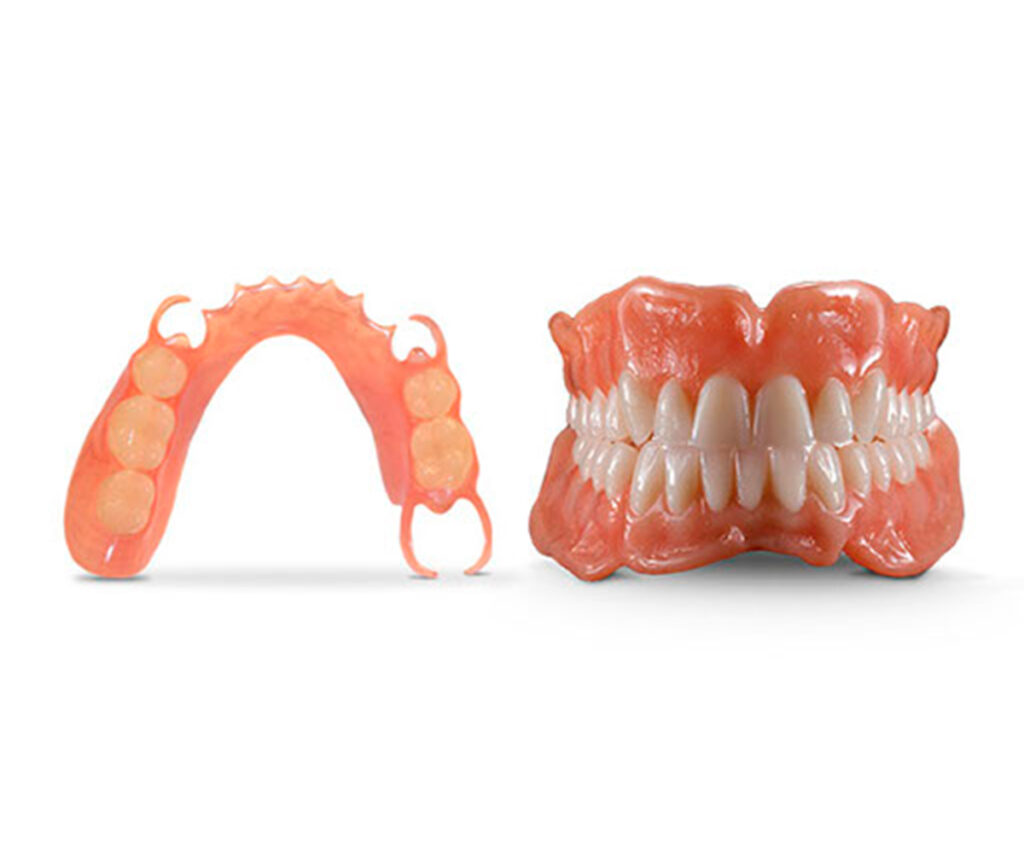
Valplast® Flexible Partial
Unlike more traditional ridged, bulky and unstable dental materials, Valplast flexible partials are made from a very pliable plastic material which fits neatly into your mouth and is virtually invisible.
- Patients seeking a lightweight, metal-free partial denture
- Cases with limited space or undercuts where rigid materials may not fit comfortably
- Interim or transitional partials during implant or restorative treatment
- Patients with metal allergies or sensitivities
- Esthetically demanding cases where tissue-colored materials are preferred
- Fully edentulous arches (Valplast is designed for partial use only)
- Patients with poor oral hygiene or high caries risk
- Situations requiring rigid occlusal support
- Heavily resorbed ridges that may not provide sufficient retention
- Cases needing frequent relines or adjustments (Valplast is not easily relined or repaired)
- Ensure clear impressions capturing all soft tissue anatomy and undercuts
- Block out deep undercuts in the model before processing
- Avoid sharp bony areas that may cause discomfort with flexible materials
- Shade selection should match surrounding tissue and teeth for optimal aesthetics
- Bite registration should be accurate to avoid occlusal interferences
Valplast flexible partials are removable and do not require cementation.
- Valplast requires a pressure-injected, heat-polymerized process to ensure strength and flexibility
- Material can be polished to a high luster and is resistant to staining
- Adjustments should be made with a coarse carbide bur followed by a rubber polisher; avoid high-speed tools
- Soaking in warm water prior to insertion can make the partial more pliable for easier placement
- Repairs are limited; replacing the prosthesis is often more effective than adjusting
- D5213 – Mandibular partial denture – resin base (including retentive/clasping materials, rests, and teeth)
- D5214 – Maxillary partial denture – resin base (including retentive/clasping materials, rests, and teeth)
